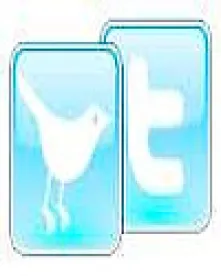What does it mean to “tweet”? In 1972, the year of Michael Jackson's debut solo album and his chart-topping hit cover of Rockin’ Robin, the answer was easy—tweeting is what a robin does. But a networked person in 2011 would give a different answer. To “tweet” is to use the internet service Twitter® to broadcast a pithy message to your entire social network—a system useful for anything from organizing the overthrow of an oppressive regime, to informing the world that you are eating a sandwich … a really good sandwich. But when Twitter sought to register the term, which has become one of the most internationally recognized marks of our day, the application was denied.
The denial was due to a prior service mark registration owned by Twittad, a company that provides advertising services on Twitter, for the tagline “Let Your Ad Meet Tweets.” Because the word “Tweets” in this phrase is a direct reference to Twitter's services, Twitter was understandably displeased with this result. On September 8th, Twitter filed suit against Twittad in the Northern District of California requesting cancellation of Twittad's registration for the tagline.
What is interesting about this lawsuit is not that Twitter would object to another company's derivative use of the term "Tweet" to the exclusion of Twitter itself. What's interesting is that Twitter didn't ask for more. Indeed, Twitter is not seeking to keep Twittad from using the phrase “Let Your Ad Meet Tweets.” Twitter just doesn't want the phrase to be a registered service mark.
Twitter's restraint is no doubt in part because third-party use of “tweet” actually helps Twitter. When other companies encourage their users to “tweet” or when they design services that make use of Twitter's platform, Twitter profits through the expanded use and advertising of its brand. But Twitter's restraint may also be due to the law that allows third parties to use other companies’ trademarks as long as the use is in direct reference to the trademark holder’s goods or services. This type of use is called “nominative fair use.”
Trademark infringement occurs when an infringer uses another company’s mark—or something similar to the mark—to confuse the public into thinking that infringer’s product is created or endorsed by the mark holder. Nominative fair use occurs when you use the mark to refer to the mark holder’s product—perhaps to compare it to your own product or to explain how your product works with the mark holder's product. Thus, Chevroletis permitted to use the mark Ford® in truthful advertising that compares Ford® trucks to Chevy® trucks, and the producer of a generic toner refill can say on its packaging that its product is compatible with Canon® printers if this is accurate.
Different courts have applied different factors for finding nominative fair use and have differed over whether it is an affirmative defense or merely an alternate means for determining whether the public is likely to be confused. But the analysis basically comes down to two questions: Has the user employed the mark more than is necessary to identify the mark holder's product and has the user done anything, other than use the mark itself, to imply sponsorship or endorsement by the mark holder? If the answer to these questions is "no," the use is probably not infringing. In the seminal case on nominative fair use, the 1990's boy band “New Kids on the Block” sued a newspaper for running a poll asking teenyboppers to call a “900” number to vote for their favorite “New Kid.” The court ruled in favor of the newspaper, finding that the newspaper had not used the trademark beyond what was necessary to identify the band and that the newspaper had not implied that “New Kids” actually sponsored or endorsed the poll.
But perhaps the greatest takeaway from Twitter's lawsuit is that even the most successful companies can forget to register their trademarks. (Click here to see our previous article on the importance of registering trademarks at the start of a new venture.) A trademark can be more than merely the name of your business. Twitter is, in fact, the owner of the trademark “Twitter.” But Twitter did not think of registering "Tweet," an important term associated with Twitter's service, until several years after Twitter began doing business. At that point, numerous other companies, including Twittad, had filed applications to register Tweet-based marks, causing Twitter’s current dilemma. Other companies should learn from Twitter’s mistake and seek registration for any terms or phrases that are integral to their products or advertising efforts as soon as possible. As they say, “The early bird catches the worm and lives to tweet about it.”



 />i
/>i

